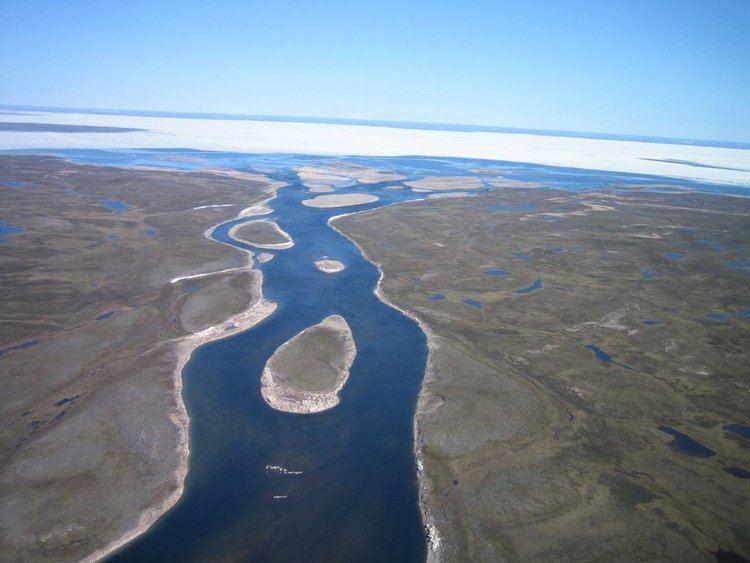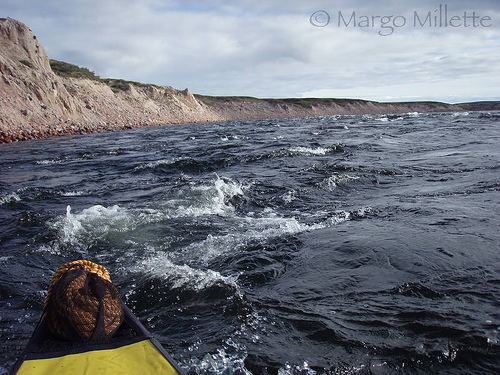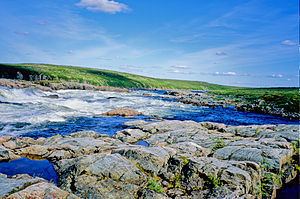Basin area 71,500 km² | Length 850 km | |
 | ||
- location | ||
Kazan river canoe trip part 1 3
The Kazan River (Inuktitut Harvaqtuuq, Inuktitut syllabics ᓴᕐᕙᖅᑑᖅ; meaning "strong rapids", "the big drift" or "place of much fast flowing water"), is a Canadian Heritage River located in Nunavut, Canada. The Dene name for the river was Kasba-tue meaning “white partridge river.” The name was apparently changed to Kazan in the late 19th century due to the influence of Order of Mary Immaculate missionaries. The river headwaters are in northern Saskatchewan at Kasba Lake, and it flows north for about 1000 km (621 mi) before emptying into Baker Lake (64°09′00″N 95°30′00″W), on the opposite side of the mouth of the Thelon River. Along its course the river flows through several lakes, including Ennadai Lake and Yathkyed Lake, over the Kazan Falls (25 m (82 ft)), down a red sandstone gorge and through both boreal forest and tundra. It is the last section of the river, below Ennadai Lake, that is above the timber line and is designated a Canadian Heritage River.
Contents
- Kazan river canoe trip part 1 3
- Flying into kasba s kazan river outpost
- Fauna and flora
- History
- Recreation
- References

Flying into kasba s kazan river outpost
Fauna and flora

Although many species of wildlife may be observed along the river, it is the barren-ground caribou (Qamanirjuaq and Beverly herds) for which it is most well known. Over 300,000 caribou migrate through the area and it is said to be the largest migration of any land animal. Other wildlife that may be observed in the area include muskox, wolverine, peregrine falcon and many species of fish.
History

The abundance of wildlife along and close to the river attracted both the Caribou Inuit and the Chipewyan Sayisi Dene for about 5000 years. Originally, the Caribou Inuit did not live in the area but returned to the coast for the winter. In the 18th century, Dene use of the area declined and Caribou Inuit, especially the Harvaqtuurmiut ("people of the Harvaqtuuq") and Ihalmiut bands, began to live along the river year round. Remnants of Ihalmiut campsites, and those of the Dene may be found along the river. Although the Inuit today no longer live along the river, they do still travel it to hunt and fish.

The first European to visit the area was Samuel Hearne in 1770 at Yathkyed Lake. However, the river was not mapped until visited by Canadian geologist and cartographer Joseph Tyrrell in 1894. Explorer Knut Rasmussen also visited the area in 1921-24 during the Fifth Thule Expedition
Recreation
The river has also become a popular tourist destination for kayaking and canoeists.
